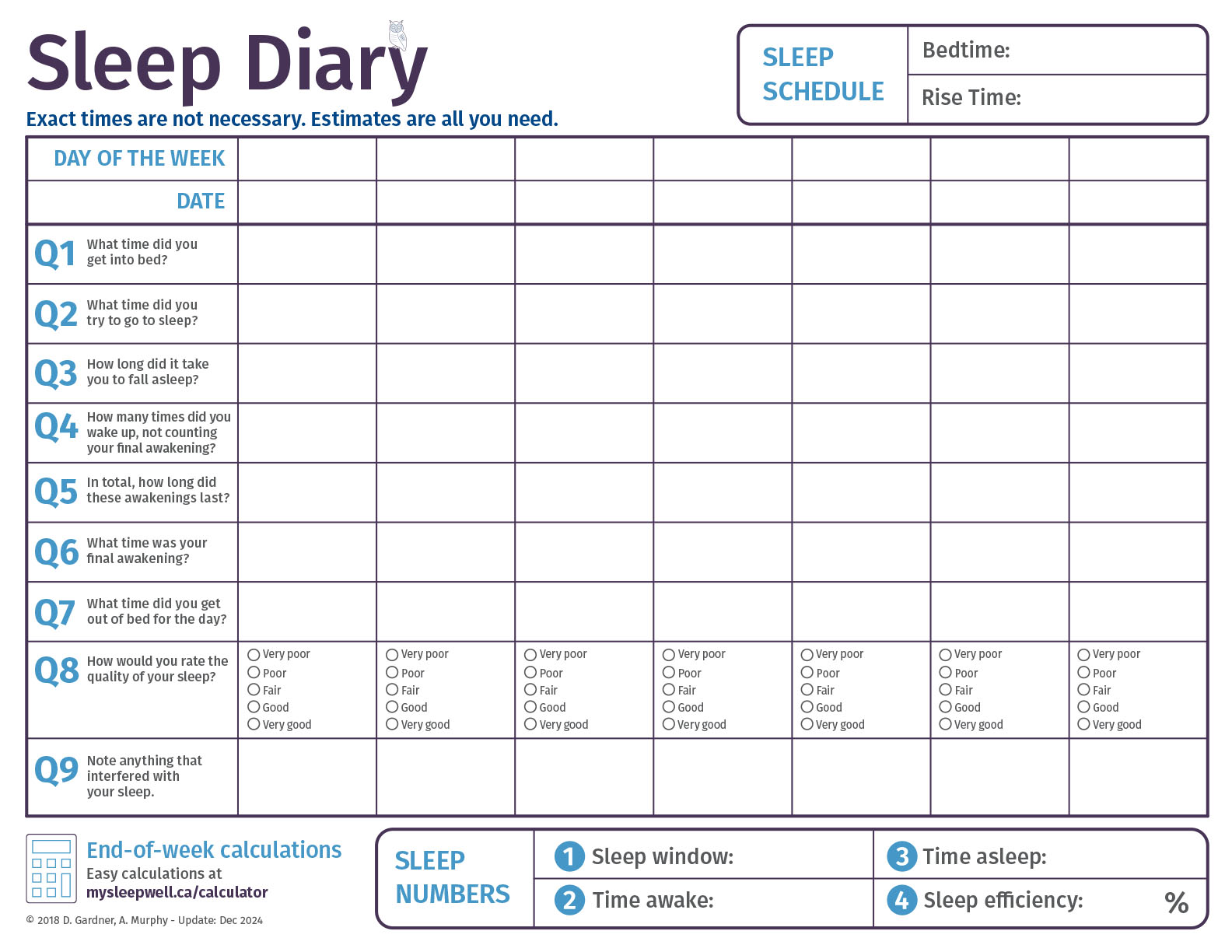A sleep diary is an important tool for the treatment of insomnia. Use it to help regulate your sleep schedule and see patterns and changes in your sleep.
Download & Print: Sleep Diary / Instructions
Sleep Diary Instructions
Sleep Schedule: Before the week starts, record the time you plan to get into bed for the night (Bedtime) and get out of bed to start your day (Rise Time). Do your best to stick to this plan all week.
Day of the week and Date: Write the day of the week and date in the spaces provided. Your week doesn’t have to start on Sunday.
Daily Record: Take a moment each morning to record your night’s sleep by answering questions Q1 to Q9. You don’t need to be precise. Try not to overthink it. Estimates are all you need to get an idea of how your sleep is changing as you go through your CBTi program.
Typical Night: At the end of each week, select a typical night from the past 7 days and use it to calculate your 4 sleep numbers for the week and record them on your sleep diary.
Track: Keep your weekly sleep diaries to compare your 4 sleep numbers as you go through your CBTi program.
Your Sleep Numbers
- Sleep window: The amount of time between getting into bed for the night and getting out of bed to start your day.
- Time awake: The total amount of time you were awake between getting into bed for the night and getting out of bed to start your day.
- Time asleep: The total amount of time you slept between getting into bed for the night and getting out of bed to start your day.
- Sleep efficiency: The ratio of your time asleep compared to your sleep window. The target is 85% to 95%.
% = time asleep / sleep window x 100
Calculating Your Sleep Numbers
OPTION 1: Online calculations
Use the Sleepwell’s Sleep Calculator
- Go to mysleepwell.ca/calculator
- Then, for your typical night’s sleep of the past week, enter your sleep diary details and click CALCULATE
OPTION 2: Manual calculations
Step 1: Choose a typical night’s sleep from the past week.
Step 2: Calculate and record your sleep numbers.
1. Sleep window: If you followed your sleep schedule, your sleep window should be approximately the duration of your sleep schedule.
2. Time awake: Sum up the time you were awake between getting into bed for the night and getting out of bed to start your day, including:
-
- getting into bed for the night and falling asleep
- when you woke up during the night, including leaving your bed
- after your final awakening until getting out of bed to start your day
3. Time asleep: Subtract your time awake from your sleep window to estimate your time asleep.
4. Sleep efficiency: Convert your time asleep from hours and minutes to hours only (e.g., 6h 45m = 6.75h). Do the same for your sleep window (7h 30m = 7.5h). Then, calculate your sleep efficiency %.
% = 6.75h / 7.5h x 100 = 90%



